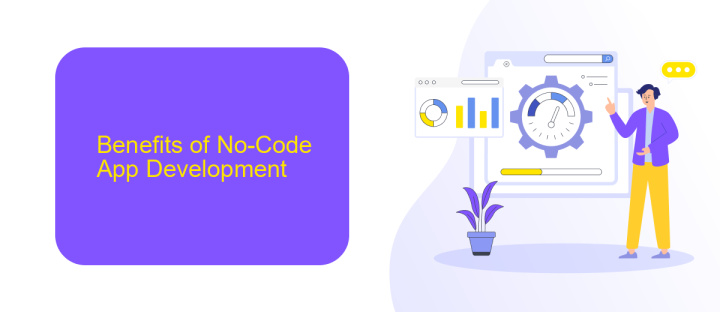Create App With No-Code
Creating an app no longer requires extensive coding skills, thanks to the rise of no-code platforms. These user-friendly tools empower anyone to bring their app ideas to life without writing a single line of code. In this article, we'll explore how no-code platforms work, their benefits, and how you can get started on your own app development journey.
Introduction
Creating an app has traditionally been a task for skilled developers, but the rise of no-code platforms has revolutionized this process. No-code tools empower individuals without programming skills to build functional and sophisticated applications. These platforms provide a user-friendly interface, often featuring drag-and-drop elements and pre-built templates, making app development accessible to everyone.
- No programming knowledge required
- Faster development time
- Cost-effective solutions
- Easy to update and maintain
One of the significant advantages of no-code platforms is their ability to integrate with various services seamlessly. Tools like ApiX-Drive facilitate these integrations, allowing users to connect their apps with other software effortlessly. Whether it's automating workflows or synchronizing data between different platforms, ApiX-Drive offers a robust solution to enhance the functionality of your no-code applications.
Benefits of No-Code App Development

No-code app development empowers individuals and businesses to create applications without the need for extensive programming knowledge. This approach significantly reduces development time, allowing for rapid prototyping and quicker iterations. By eliminating the barrier of complex coding, no-code platforms democratize app creation, enabling a wider range of people to bring their ideas to life. This not only fosters innovation but also allows businesses to respond more swiftly to market demands and customer feedback.
Another key benefit of no-code app development is the ease of integrating various services and tools. Platforms like ApiX-Drive facilitate seamless integration with multiple applications, enhancing the functionality of your app without the need for custom code. This means you can effortlessly connect your app to CRM systems, email marketing tools, and other essential services, streamlining workflows and improving efficiency. Overall, no-code development offers a cost-effective, flexible, and user-friendly solution for building robust applications.
Choosing the Right No-Code Platform

Choosing the right no-code platform is crucial for the success of your app. With numerous options available, it's essential to evaluate each platform based on your specific needs and goals. Begin by identifying the core features your app requires and match them with the capabilities of various no-code platforms.
- Ease of Use: Look for platforms with intuitive interfaces and comprehensive tutorials.
- Scalability: Ensure the platform can handle your app's growth and increasing user base.
- Integration: Check if the platform supports integrations with other tools and services. For instance, ApiX-Drive can help you automate and streamline data flow between different applications.
- Customization: Assess the level of customization available to tailor the app to your unique requirements.
- Support and Community: Opt for platforms with active support channels and a vibrant user community for troubleshooting and advice.
After considering these factors, test a few platforms with trial versions to get hands-on experience. This will help you make an informed decision and choose the best no-code platform that aligns with your app development objectives.
Building Your App

Building your app with no-code platforms is a straightforward process that requires no programming skills. Start by selecting a no-code platform that suits your needs, such as Bubble, Adalo, or Glide. These platforms offer drag-and-drop interfaces, making it easy to design and customize your app.
Once you've chosen a platform, begin by outlining the core features and functionalities your app will offer. This step is crucial for ensuring that your app meets user expectations and provides a seamless experience. Create wireframes or mockups to visualize your app's layout and user flow.
- Design your app's interface using pre-built templates or from scratch.
- Add functionalities by integrating various plugins and tools.
- Test your app thoroughly to identify and fix any issues.
- Use ApiX-Drive for seamless integration with other services and APIs.
After building and testing your app, it's time to launch. Most no-code platforms offer easy deployment options, allowing you to publish your app to app stores or the web with just a few clicks. Remember to gather user feedback and make necessary updates to improve your app continuously.


App Testing and Deployment
Once your no-code app is built, the next crucial step is testing. Testing ensures that your app functions as intended and provides a smooth user experience. Utilize built-in testing tools provided by your no-code platform to simulate user interactions and identify any issues. Pay close attention to user feedback during this phase, as it can highlight areas for improvement. Additionally, consider using external testing services to perform more rigorous checks, ensuring your app is robust and reliable.
After thorough testing, it's time to deploy your app. Most no-code platforms offer straightforward deployment options, allowing you to publish your app with a few clicks. However, if your app requires integration with other services, tools like ApiX-Drive can simplify this process. ApiX-Drive enables seamless integration with various APIs, ensuring your app can communicate effectively with other software. This step is crucial for apps that rely on external data or services to function optimally. Once deployed, monitor your app's performance and be prepared to make iterative updates based on user feedback and performance metrics.
FAQ
What is no-code development?
Can I build a complex app using no-code tools?
How do I integrate different services into my no-code app?
Is no-code development suitable for businesses?
What are the limitations of no-code development?
Apix-Drive is a universal tool that will quickly streamline any workflow, freeing you from routine and possible financial losses. Try ApiX-Drive in action and see how useful it is for you personally. In the meantime, when you are setting up connections between systems, think about where you are investing your free time, because now you will have much more of it.

